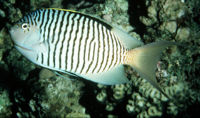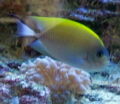Difference between revisions of "Genicanthus caudovittatus"
From The Aquarium Wiki
| Line 71: | Line 71: | ||
== External links == | == External links == | ||
*{{FishBase |id=11132}} | *{{FishBase |id=11132}} | ||
| − | *[[w:Genicanthus caudovittatis|Wikipedia] | + | *[[w:Genicanthus caudovittatis|Wikipedia]] |
*[http://www.peteducation.com/article.cfm?c=16+1879&aid=1997 Pet Education] | *[http://www.peteducation.com/article.cfm?c=16+1879&aid=1997 Pet Education] | ||
*[http://www.fishprofiles.com/profiles/profile.aspx?id=346 Fish Profiles] | *[http://www.fishprofiles.com/profiles/profile.aspx?id=346 Fish Profiles] | ||
*[http://www.petsolutions.com/Japanese-Swallow-Angel+I105200L+C16211.aspx Pet Solutions] | *[http://www.petsolutions.com/Japanese-Swallow-Angel+I105200L+C16211.aspx Pet Solutions] | ||
*[http://www.marinedepot.com/md_educationcenter_species_details~ProductId~325374.html Marine Depot] | *[http://www.marinedepot.com/md_educationcenter_species_details~ProductId~325374.html Marine Depot] | ||
Revision as of 23:29, 19 March 2018
Japanese Swallowtail Angelfish
Genicanthus caudovittatus
341 Litres (90 US G.)
12.7-15.2cm (5-6 ")
8.1 - 8.5
22.2-25.6°C (72 -78 °F)
8-12 °d
1:1 M:F
2-5 years
Family
Pomacanthidae
| You can contribute to the Aquarium Wiki by expanding this article. Dont be shy!. |
Contents
Additional names
- Japanese Swallowtail Angelfish, Japanese Swollowtail Angelfish, Zebra Angelfish, Black Spot Angelfish, Blackspot Angelfish, Blackspot Lyretail Angelfish, Spotbreast Angelfish
Additional scientific names
- Centropyge caudovittatus, Geniacanthus melanospilus, Genicanthus melanospilus, Holacanthus caudibicolor, Holacanthus caudovittatus, Holacanthus melanospilos, Holacanthus zebra
Sexing
- Females will have a yellow stripe on their backs and a light blue body with a black and blue tail, males will be similar but with thick black lines on their bodies.
Tank compatibility
- One of the few reef-safe Angelfish, should not nip at corals or invertebrates. Works well in a mated pair, or in a school if the tank is large enough.
Diet
- Algae, sponge, and other prepared foods. Accepts small pellets and frozen food as well.
Environment specifics
- Needs a mature reef tank with plenty of live rock for grazing. Hiding places should also be provided within the rock work.
Behaviour
- A relatively peaceful Angelfish which will spend most of its time grazing the live rock.
Identification
- Yellow on the top with blue bodies, the females will have black stripes on the tail and the males on the body. See sexing.
Pictures
External links
- Fishbase (Mirrors:
 )
)

